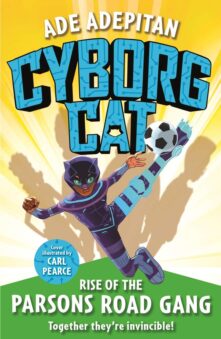In this episode, we talk about seizures (and a bit about severe disabilities). The book of the week is “What the Wind Can Tell You” by Sarah Marie Jette. It is an incredible book featuring a Mexican American family hoping for a medication that can cure their son’s seizures, but they have to decide if that cost is worth it. The target audience is kids ages 8-12 years, but truly I feel that this book can be read and enjoyed by an older audience as well.

What are seizures?
A seizure happens when there is a sudden change in the normal electrical activity of the brain. This can cause changes in behaviour, awareness and sensation. Seizures can be generalized (involving the whole body) or focal (involving one part). Some seizures can look quite dramatic, with a lot of uncontrolled jerky movements. A person may or may not lose consciousness. But other types of seizures can be very subtle – with absence seizures, children often appear to be absentminded or daydreaming because the seizure may just involve staring or blinking.
Seizures can happen for many reasons (for example, a brain injury, an infection, or fever). Other times there is no clear reason for the seizures. We call it epilepsy when a person has more than one seizure that is unexplained.
Some children need to take medications to stop seizures from happening again. Some people’s seizures are very easily controlled with medication, however others will have a hard time with ongoing seizures even while on medications. Most seizures don’t last very long. Seizures that last more than 5 minutes are a medical emergency. What do you do when someone has a seizure?
Back to our book
Julian is 15 years old and he has had seizures almost daily since he was a baby, for reasons that nobody can figure out. He also has other pretty significant medical needs – he is wheelchair bound, he cannot communicate with words, he needs a feeding tube through his stomach, he has swallowing difficulties. This is the first book that I have read that depicts a child with this level of medical need, but there are many such children. This book is an eye opening glimpse into the experiences of these children and their families.
The book opens up with Julian having a ‘BIG’ seizure , a generalized convulsive seizure that lasts so long he needs to be taken to the hospital where he stays for a week. When he comes back out he has been started on a new medication that will hopefully make his seizures better, but it comes with a side effect of fatigue. Julian gets to the point where he is asleep most of the time and missing out on many of the activities that he loves. For Julian’s mother, her life has revolved around tracking his seizures, so she is filled with hope that this is finally the curefor him. However Julian’s sister is not so sure.
The Sibling Complex
The book is actually told from the perspective of Julian’s younger sister Isabelle. Isabelle has a certain strength and maturity that comes from being a sibling of a child who needs a lot of medical attention. Isabelle has been helping with Julian’s care since she was young – she learned how to work his feeding machine when she was seven. She helps track his seizures, does therapies with him, helps with his medications. But sometimes she is forgotten and overlooked by her parents because they are focused on her brother.
This situation happens frequently with siblings of children who have had a serious illness. Parents understandably spend so much time worrying about the sick child that sometimes they pay less attention to the well child. But that child has emotional needs too that are sometimes not met, which can lead to resentment. It takes intentionality and sometimes enlisting help from family and friends to ensure that siblings also feel seen.
A Cure, but At what Cost?
Isabelle is a big advocate for Julian, encouraging people to see him for more than his disability. She also advocates for him when he is started on the medicine that helps his seizures, but makes him sleep all the time. In a powerful response to her mom’s optimism, Isabel points out
“But Mama, Julian almost had a day without smiling.
Without playing, without laughing. Without having fun”
In the end they have to make a choice about what is best for his quality of life.
This book did an excellent job at highlighting the complex emotions and difficult decisions involved with caring for a child with serious medical needs. (For this reason, even though it is a children’s book, I would actually recommend it for medical professionals. Any pediatric residents out there?) It also offers a challenge to the reader: Check your focus. Whether in regards to disability, health, or another aspect of life – are you focused on the right thing? What could you be neglecting in the process?
Bonus book:
![Meena Meets Her Match (The Meena Zee Books Book 1) by [Karla Manternach, Rayner Alencar]](https://m.media-amazon.com/images/I/517cMfJ9a5L.jpg)
Meena Meets her Match shows a very different depiction of seizures (absence seizures). It highlights some of the emotions and anxiety surrounding an uncertain diagnosis. It is also for readers ages 8-12years.
Interested in other children’s books touching on health conditions? Check out our bookshelf!

